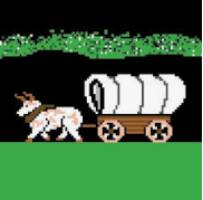Summary
Math trails are explorations where students can go outside the class to engage in meaningful mathematical tasks. In this lesson, students will explore a virtual math trail on the University of Oklahoma's Norman campus to engage in spatial reasoning and estimation.
Essential Question(s)
What mathematics can I explore in the world around me?
Snapshot
Engage
Students engage in a Create the Problem activity.
Explore
Students explore a virtual math trail set on the University of Oklahoma campus.
Explain
Students share their solutions from the math trail in a Gallery Walk.
Extend
Students create their own virtual math trail.
Evaluate
Students trade math trails and explore their peers' problems.
Materials
Devices such as a smartphones, tablets, or laptops with access to Google's My Maps
Pens and paper
Calculators
Large sticky notes
Small sticky notes
Engage
Ask students to sit in groups of four. Consider using numbering or another grouping strategy to help organize students.
Using the Create the Problem strategy, have students respond to the following prompt: The result of a mathematical operation is 12. Create a problem with a context that has one operation and has 12 as the solution.
Repeat the process with the following prompt: The result of two mathematical operations is 24. Create a problem with a context that has 2 operations and has 24 as the solution.
Share with students that they are about to embark on a virtual tour called a math trail. On the trail, students will be using their knowledge of geometry to estimate reasonable solutions to real-world mathematics problems.
Explore
In their groups of four, ask students to use their devices to navigate to the OU Math Trail page.
Ask students to take out a few sheets of scratch paper to record their work.
Have students explore each of the six stops along the trail, using any of their resources to answer each of the questions. Resources can include Google Maps Street View (to get a better angle of the object being measured), their calculators, or their peers.
After students complete all six stops, move to the Explain activity.
Explain
As students finish exploring, ask one student from each group to get a large sticky note.
On the sticky note, ask students to write out their solution to one problem that they found intriguing. Solutions can include the steps they took to complete the problem along with a justification for their answer.
Once their solution is complete, ask them to place their sticky note somewhere on the classroom walls.
Distribute a few small sticky notes to each student.
As more students complete their solutions and place them on the walls, ask students to complete a Gallery Walk. Groups will circulate around the room, stopping at each sticky note long enough for students to learn from and evaluate the work.
Students should use the small sticky notes to leave at least two questions or comments about each presentation.
Once all of the groups have completed the gallery walk, groups should return to their original presentations to examine the feedback left for them.
Extend
Ask each student to work with a partner for the Extend activity. Assign partners or let students choose, at your discretion.
Tell students that they will be creating their own math trail using Google My Maps. Distribute the Math Trail Task Guidelines handout and go over the procedure with students.
Once students are finished creating their math trails, ask them to share their links with you.
Evaluate
To evaluate this lesson, assign a student-created math trail to each pair of students. Ask students to follow the math trail of their peers, solving the problems along the way.
As students are solving their peers' maps, ask them to make notes about the quality and complexity of the map.
Resources
K20 Center. (n.d.). Create the Problem. Strategies. https://learn.k20center.ou.edu/strategy/d9908066f654727934df7bf4f506ae04
K20 Center. (n.d.). Gallery Walk / Carousel. Strategies. https://learn.k20center.ou.edu/strategy/d9908066f654727934df7bf4f505a54d
Shoaf, M. M., Pollak, H., & Schneider, J. (2004). Math trails. Retrieved from https://www.comap.com/highschool/projects/mathtrails/MathTrails.pdf
Wells, C. (2019). Ol' dusty trail. Google My Maps. Retrieved from https://www.google.com/maps/d/u/0/edit?mid=1-hTFxeW67YJ0uwBI9B2T5Euj2hmzD6Fg&ll=35.20718309545767%2C-97.44396180703751&z=17


